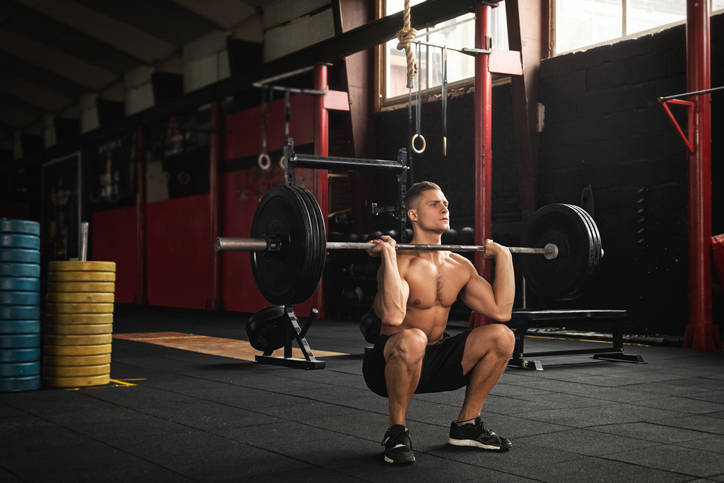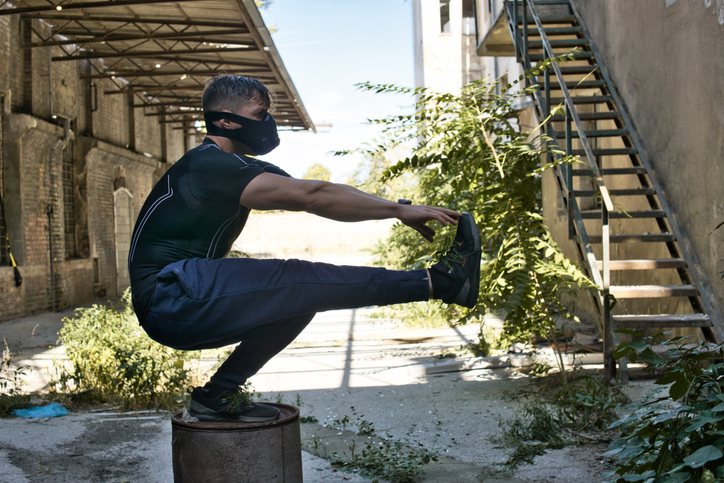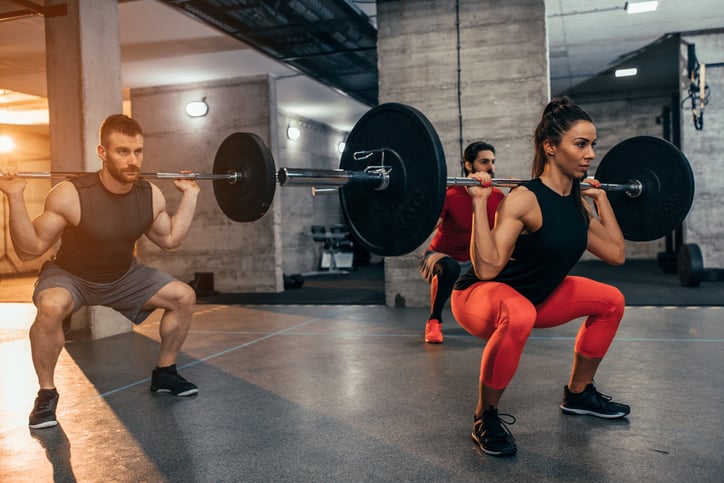Who doesn’t love leg day? Squats are one of the best compound exercises you can perform. They not only train your quads and your glutes, but your core and your back as well (if you’re doing them properly).
But did you know there are a few different variations of squats you do to isolate some of the muscles and train some of the accessory muscles as well? Check out the top 5 squat variations below.
Front Squat

Arguably the next best alternative to the back squat, front squats are pretty much the same, except that you will rack the barbell on the front of your shoulders instead of your back.
The biggest difference you’ll notice here is that the weight is going to pull you forward and down a lot harder than usual. To prevent the barbell from rolling off your shoulders, or rounding your back, you’ll want to keep your elbows up and chest up as well. You want your back as upright and tight as possible.
Because of the extra core work, the front squat will help you work more of your core muscles. With the weight more forward on your center of gravity, it also works the quads a little more than the glutes.
Cossack Squat
A Cossack squat isolates the squat to each leg–almost like a lunge, but instead if your feet being directly in front or behind you, they’re to each side of you.
You’ll bend one knee to squat down on one side and stand back up all the way before repeating on the other leg. It’s important to stand up all the way instead of switching legs halfway through standing up, since that is how you’ll get to work the leg muscles through full range of motion.
Because your hips are opened up in this extra wide stance, you’ll get to work more of the inner muscles on your thigh. Try it out first without any weight. If you’re a little more experienced, you can try a lightweight barbell first. Keep in mind that because you’re working one leg at a time, you want your working weight to be lower than your average back squat.
Pistol Squat

This one is more of a gymnastics movement but is a powerful leg-building tool nonetheless. Standing on one foot, squat all the way down without your other leg or foot touching the floor and stand all the way back up.
This movement is definitely more advanced as not many people have the mobility in their ankles, or the balance to stand on one leg alone. Some modified movements to help you get there are to hold on to a stationary object to help you stand up, or to put something underneath the heel of your standing foot to help with your ankle flexibility.
Once you are able to complete a rep, you’ll notice you’re using more of the upper area of your leg than you are used to. This movement is especially helpful for working the “sticky” parts of your back squat if you’re getting stuck standing the weight up on your heavier numbers.
Cyclist Squat
This variation is not quite as well known as the others, but is the best at really isolating your quads. Standing with your legs extremely close together in a narrow stance (almost touching), squat all the way down and stand back up.
This should be pretty easy if you’re not using any weight, but you might have noticed the depth of your squat is a lot shorter than your usual since your hips are closed. You still want to try to get to parallel or a little bit below for full range of motion, but you won’t be able to go ass to grass.
If and when you add weight, make sure to front rack the barbell instead of back racking. This will also increase the mass in front of your center of gravity and put more emphasis on the quads.
Box Squat
This is probably one of my favorite squat variations. With these, place a plyo box behind you in the squatting area. Ideally you want it between 18-20”. Any higher, and it might be too easy.
Perform a back squat as usual and keep squatting until your rear reaches the top of the box. All you want to do here is touch and go from the box. Don’t sit on the box fully and let your body relax. You want to keep your legs and your core tight throughout the entire movement.
However, you theoretically should be able to squat about 20% more with the box squat than your one-rep max. This helps you get used to heavier weight when you do shoot for a new one rep max.
